African empires 500 to 1500
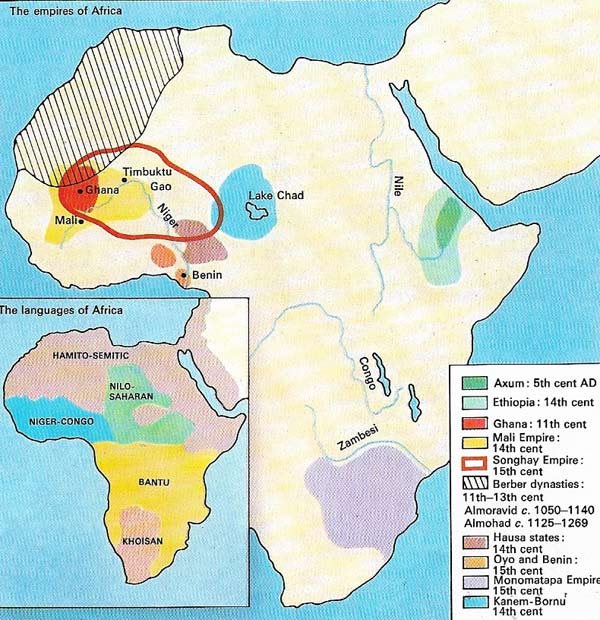
Figure 1. The population of sub-Saharan Africa is mostly Negroid, although Khoisan, in the south, are smaller peoples of different origins. The inhabitants of Africa north of the Sahara are paler – often Caucasoid in origin. Three main features distinguished the development of African languages: the long evolution of western African languages; the fairly rapid spread, after about 2000 BC, of an offshoot of them, the Bantu languages, over all of Africa south of the Equator; and the imposition of Arabic on the much more ancient Semitic languages, such as Berber, still spoken in northern Africa.
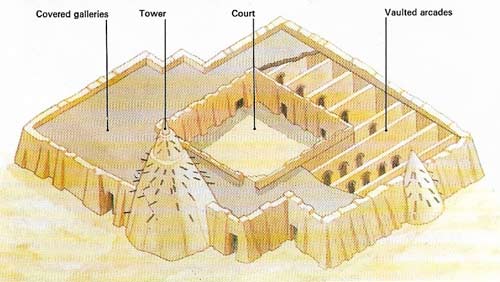
Figure 2. The great mosque at Timbuktu was designed on the 14th century by As-Saheli, one of the Egyptians brought back to Mail by the emperor Mansa Musa after his pilgrimage to Mecca in 1324. Timbuktu grew to be an important center of commerce, religion and learning, producing many fine Muslim scholars.
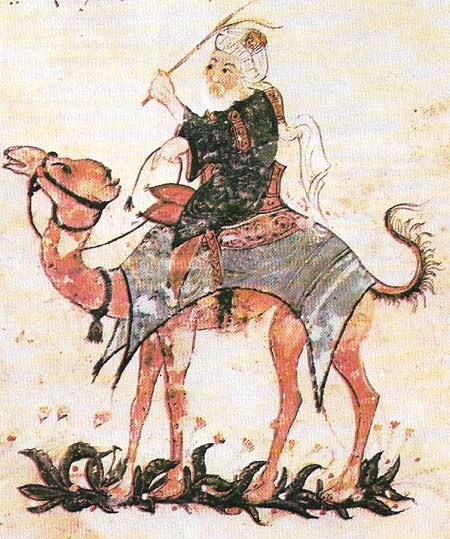
Figure 3. Trade routes across the Sahara had developed in Greek and Roman times, but first came into their own with the introduction of the camel to Africa around AD 100 and the growth of the Islamic stares six centuries later. This 13th-century picture shows a Muslim merchant of the kind that engaged in this ancient and hazardous commerce. He would have traded in Western African gold, ivory, kola nuts, slaves and leather wares in exchange for salt, weapons and luxury goods. Control of the southern end of these trade routes made rich the great Sudanic states of Ghana, Mali, Songhay, the Hausa states and Bornu.
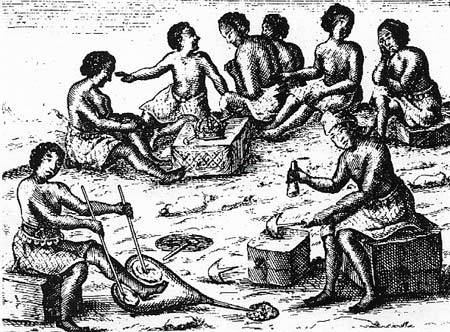
Figure 4. Knowledge of iron technology for producing tools and weapons was important in the history of African cultures and political systems, contributing to the ascendancy of many kingdoms that later became great empires. The spread of iron-working occurred over West Africa before the end of the 1st millennium BC and is linked south of the Equator with rapid expansion of the Bantu. This picture shows the successive processes of smelting, forging, and trading.
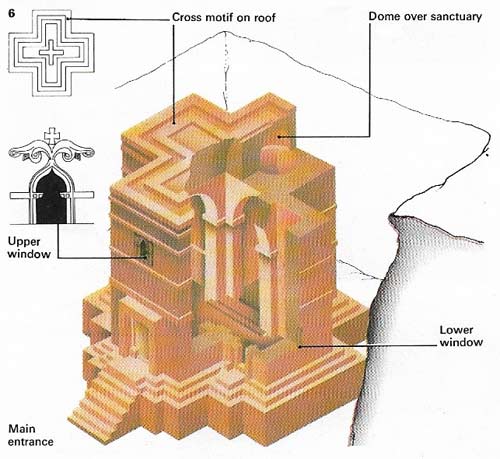
Figure 5. This church at Lalibela in Ethiopia was one of several hewn out of solid rock during the 13th century. The Middle Ages were a time of great church building and of general revival and expansion for this ancient Christian empire.
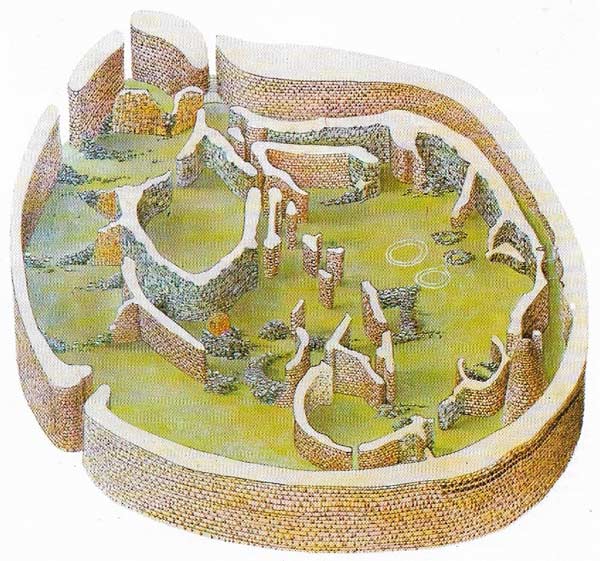
Figure 6. The Great Enclosure at Zimbabwe was built mainly in the 14th and 15th centuries on a site used for ritual purposes since c. AD 1000. The plateau area of Zimbabwe, the modern Rhodesia, supplied gold to Arab traders at Sofala (a coastal outpost of the rich trading city of Kilwa in East Africa). To the north of Great Zimbabwe, the Monomatapa kingdom was formed, probably in the 15th century, and by 1500 the Portuguese were supplanting the Arab trading links.
The most obvious sign of Africa's emergence from the primitive status of a "prehistorical continent" was the growth of political states (Figure 1). The 1,000 years from 500 to 1500 saw the gradual emergence and then the great flowering of the black kingdoms that created such a rich and varied culture. By the beginning of the sixteenth century, much of the continent had entered this stage, evolving organized political societies with rulers, a soldiery under their direct command, and an administrative class. These were economically supported by the tribute that could be exacted from the mainly agricultural peoples considered to be either directly or indirectly the subjects of these states. Rulers often also controlled important trade routes.
The first black empires
The most ancient black African states were the empires of Kush/Merot in the middle Nile Valley (c. 800 BC–c. AD 400) and Axum in northeastern Ethiopia (1st to 5th centuries). These were shaped by the influence of Egypt and south Arabia respectively and, although they had considerable effects upon later developments farther south, were rather special cases. These empires apart, the main African empires were in the Sudanic belt, that is in the area to the south of the Sahara and north of the tropical forests.
The earliest of these Sudanese empires was Ghana, which was founded by the West African Soninke people. The first reference to Ghana comes from a North African writer in AD 773, and by 800 it had emerged as a powerful trading state, ruling the whole of the country between the Senegal and upper Niger rivers. The prosperity of Ghana was based largely upon its control of the gold trade. The gold fields of West Africa lay well to the south and Ghanaian traders obtained the precious metal by a strange process known as dumb barter in which the gold producers never met these traders face to face. The Ghanaians then sold the gold to North African merchants, who gathered in the southernmost oases. These oasis communities on the edge of the Sudanic belt served as the termini for the caravans that braved the routes across the Sahara (Figure 3).
Sometimes the fierce Berber nomads who usually guided these caravans turned upon the settled trading empires. In the middle of the eleventh century, the Almoravids, a Berber confederation, led a Muslim holy war out of the desert to the north and to the south. In 1054 they invaded Morocco (later conquering southern Spain) and in 1076–1077 seized the capital of Ghana.
The growth of the desert empires
Although the Ghanaian Empire fell, many smaller kingdoms survived and one of these grew into the spectacular empire of Mali (Figure 2). Three great kings (who ruled between c. 1230 and c. 1340), Sundiata, Mansa Uli and Mansa Musa, so expanded Mali that it became one of the greatest empires in the world. It covered much of the western Sudan, and included the famous city of Timbuktu. The rulers had become Muslim (the religion travelled across the desert trading routes), and in 1324 Mansa Musa made the pilgrimage to Mecca, taking so much gold that he upset the Cairo money market en route. The successor state to Mali was Songhay, which had its centre on the middle Niger. The great rulers of Songhay at the height of its power were Sonni Ali (reigned 1464–1492) and Askia the Great (reigned 1493–1528).
To the east of Songhay were the Hausa states, such as Kano and Katsina, whose origins are traditionally traced back to the eleventh century. By the 14th century they had become the domains of powerful kings and prosperous merchants, centres of population, crafts and trade. They were famous for their leather work, which was exported north across the desert. Europeans obtained it in North Africa, and knew it as Moroccan leather. In the central Sudan, on either side of Lake Chad, was the great state of Kanem-Bornu. From as early as the 11th century its rulers had been Muslims. Kanem-Bornu was one of the oldest and largest African states, retaining its independent existence (although with changes of ruling dynasty) until it was overthrown by the European invaders at the end of the 19th century. In the mountains at the eastern end of the Sudanic belt, the Christian empire of Ethiopia (Figure 5) became the successor of ancient Axum.
In the woodland and forest areas to the south of the Sudan, kingdoms made a some-what later appearance, but many, including Benin and the Oyo empires of Yorubaland (both of which produced some of the world's great sculptures, were in existence before the coming of the first Europeans in the 15th century.
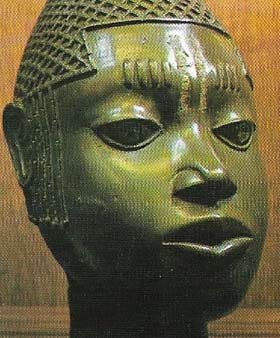 |
| Powerful kingdoms had grown up in the forest regions of West Africa by the 1400s and were in trading contact with the older Sudanic states to the north. The former had a rich and ancient artistic tradition, especially in sculpture - Ife terracotta and bronze heads, and Benin bronzes have achieved world renown. This detail of a bronze head from Benin lacks the finesse of very early Benin workmanship but, although heavier, still exhibits considerable skill. |
The kingdoms of the Bantu nations
In other parts of Africa, especially in the vast regions south of the Equator over which the Bantu language family had spread rapidly during a few thousand years, states were beginning to be established. A cluster of kingdoms came into existence between the great lakes of East Africa, including Ruanda and Buganda. Another group, the Luba-Lunda kingdoms, grew up south of the Congo (Zaire) forests, and the Kongo kingdom also emerged south of the river estuary that in colonial times bore its name. Much farther to the south were Great Zimbabwe and the empire of Monomatapa (Figure 6), on the Zimbabwe/Rhodesia plateau, which traded gold to the Muslims on the East African coast.
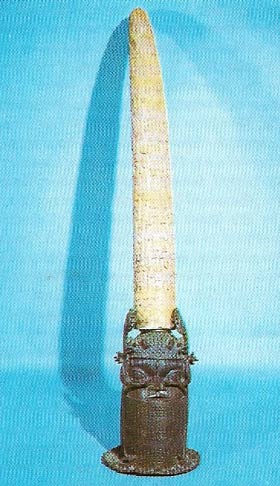 |
| This bronze head with ivory headdress portrays an Oba (King of Benin). The splendor of the great African states was epitomized on the persons of their rulers. The headdress is carved with pictures showing the power of the Oba, which was, in the case of most African rulers, circumscribed; they were seldom absolute monarchs, being regarded instead as fathers of their people and personally responsible for their welfare. Many African kings were considered to be divine – their function in the world being to mediate between man and the gods. This high concept of leadership did not, of course, prevent corruption in ambitious rulers. |
